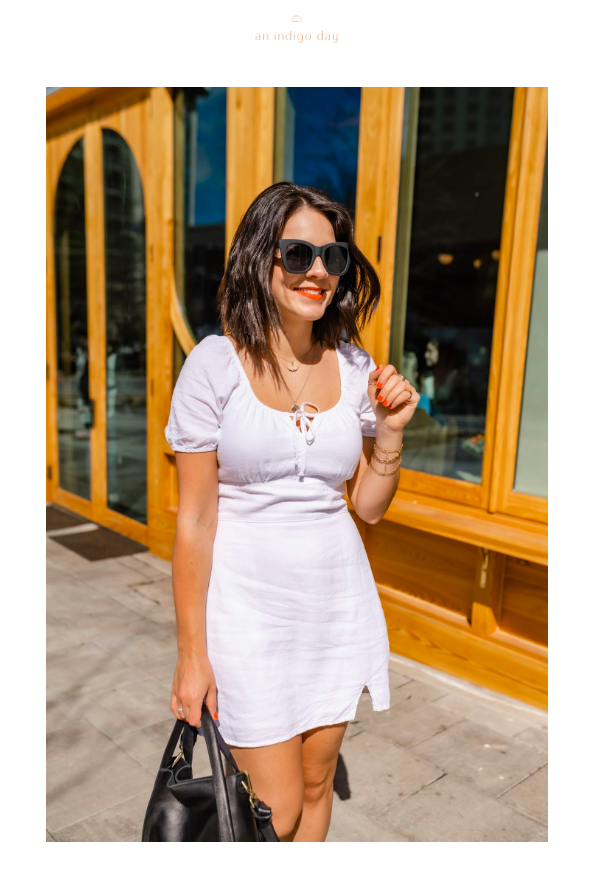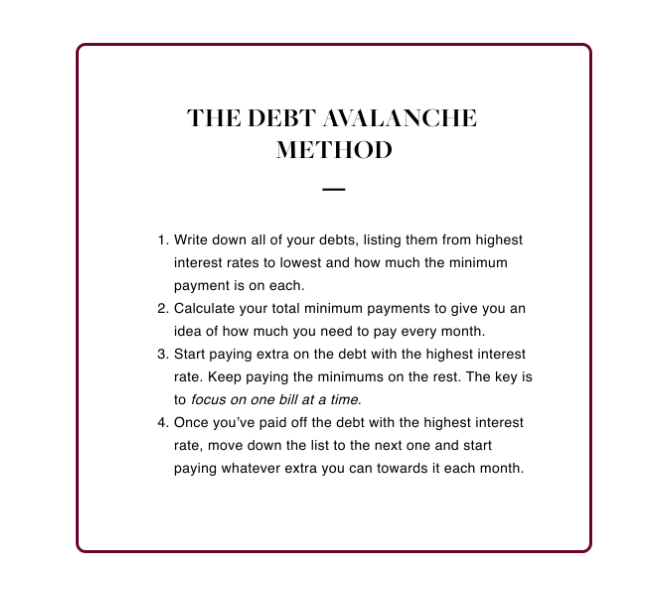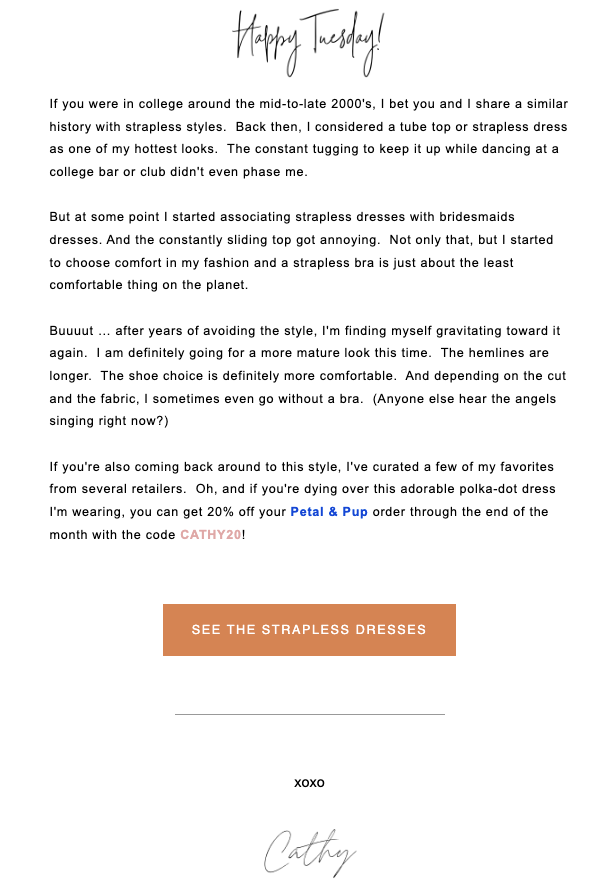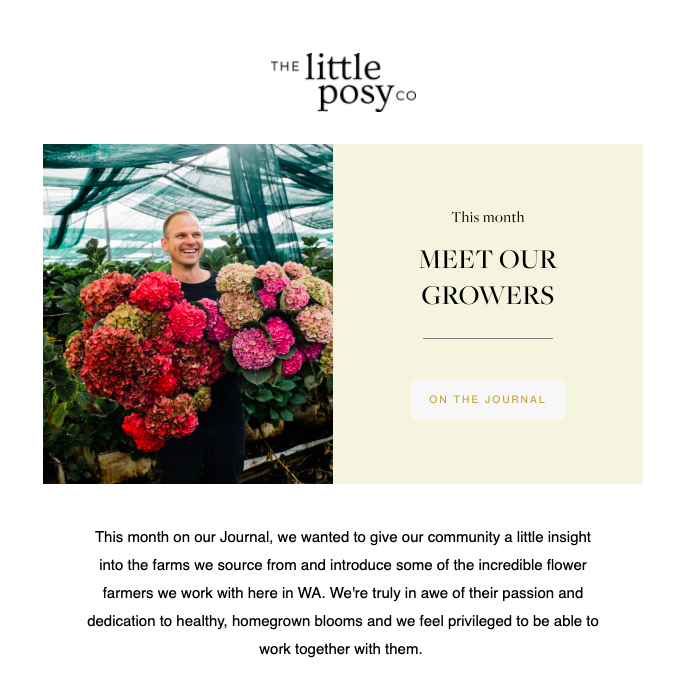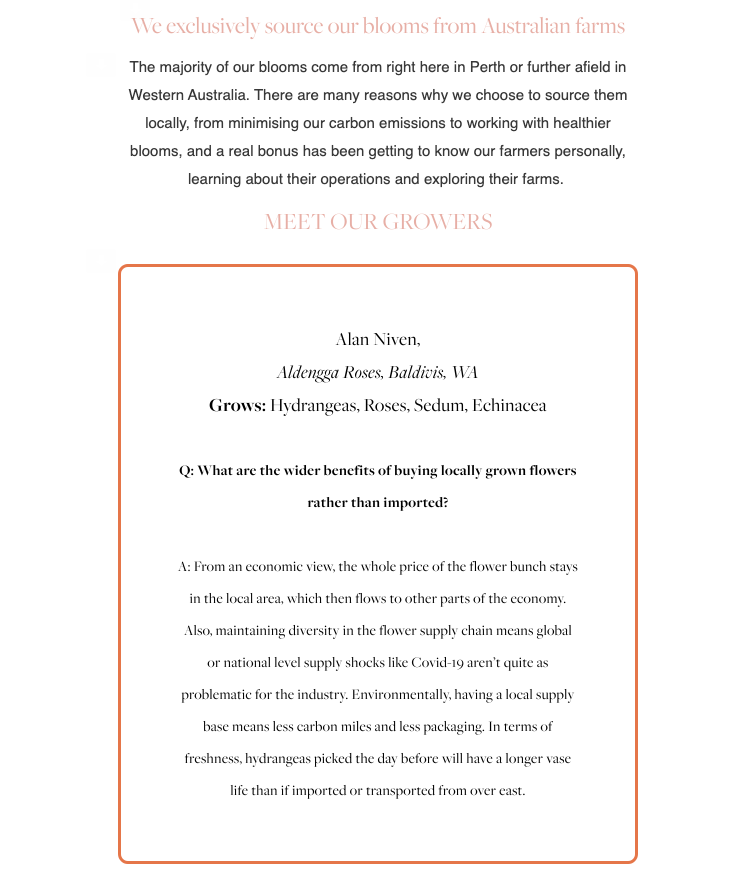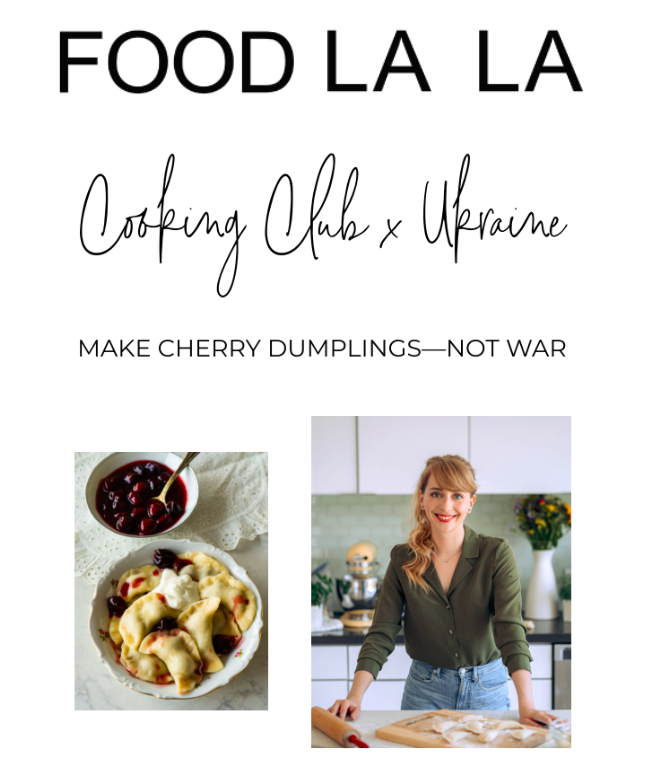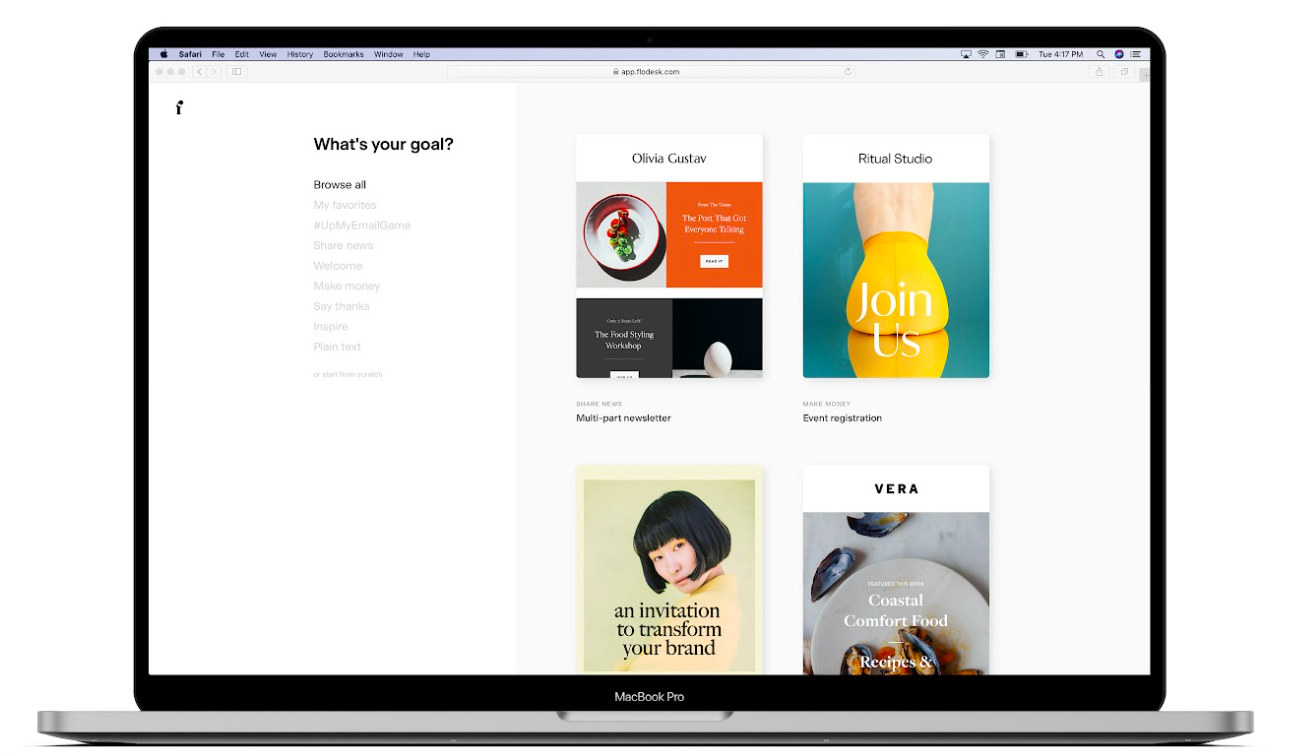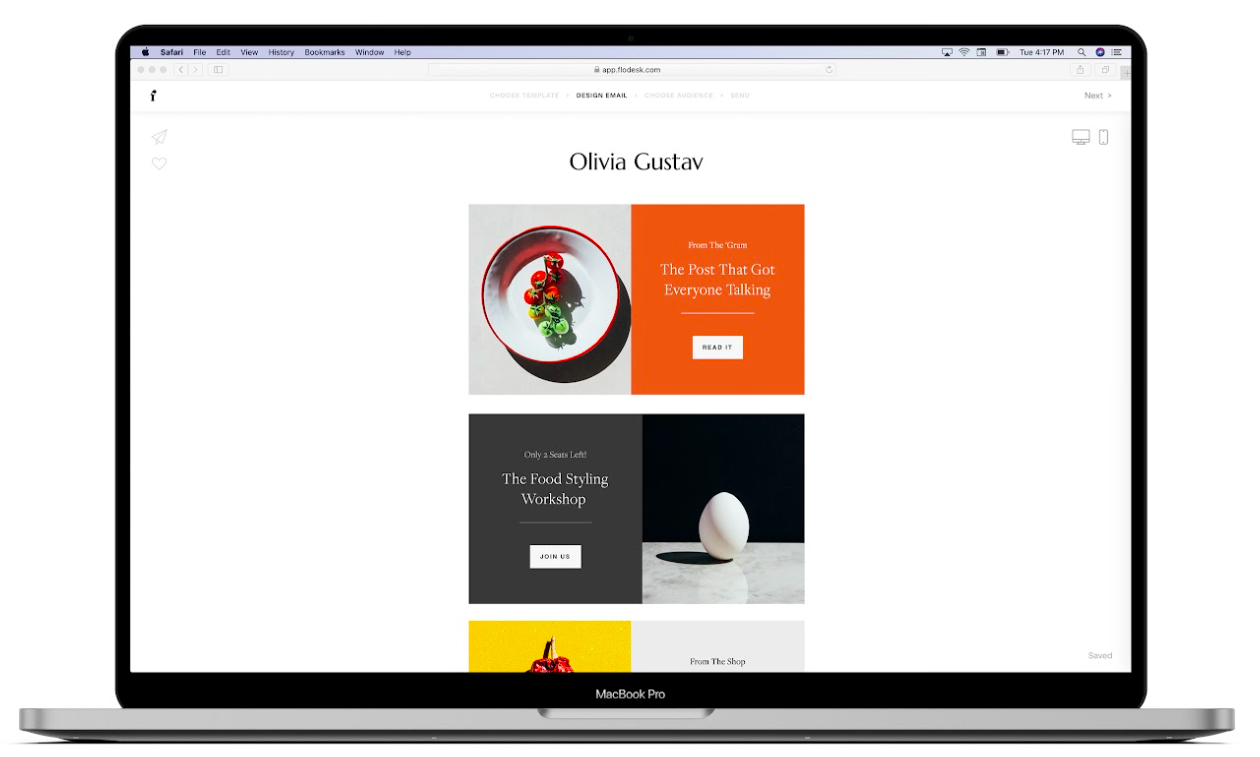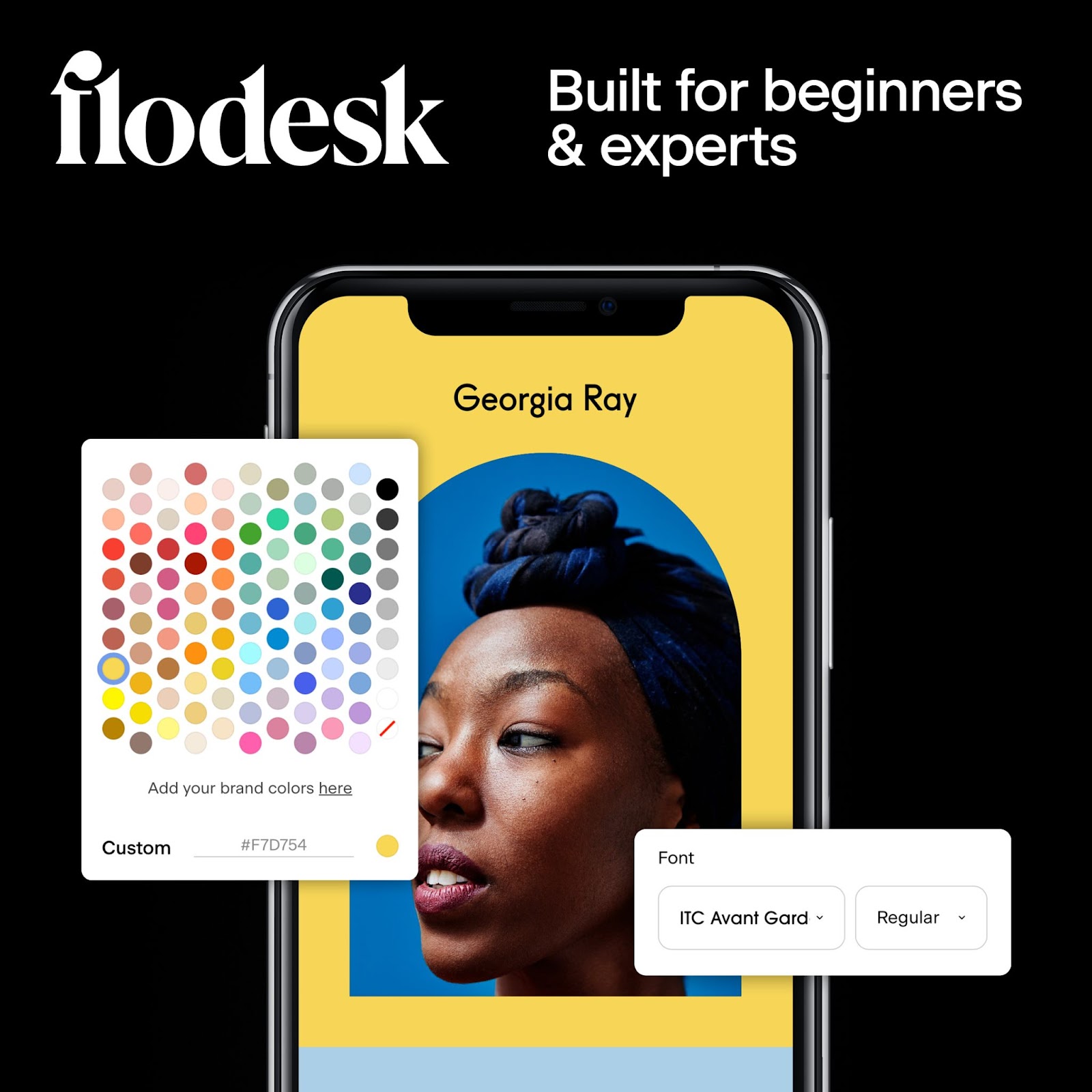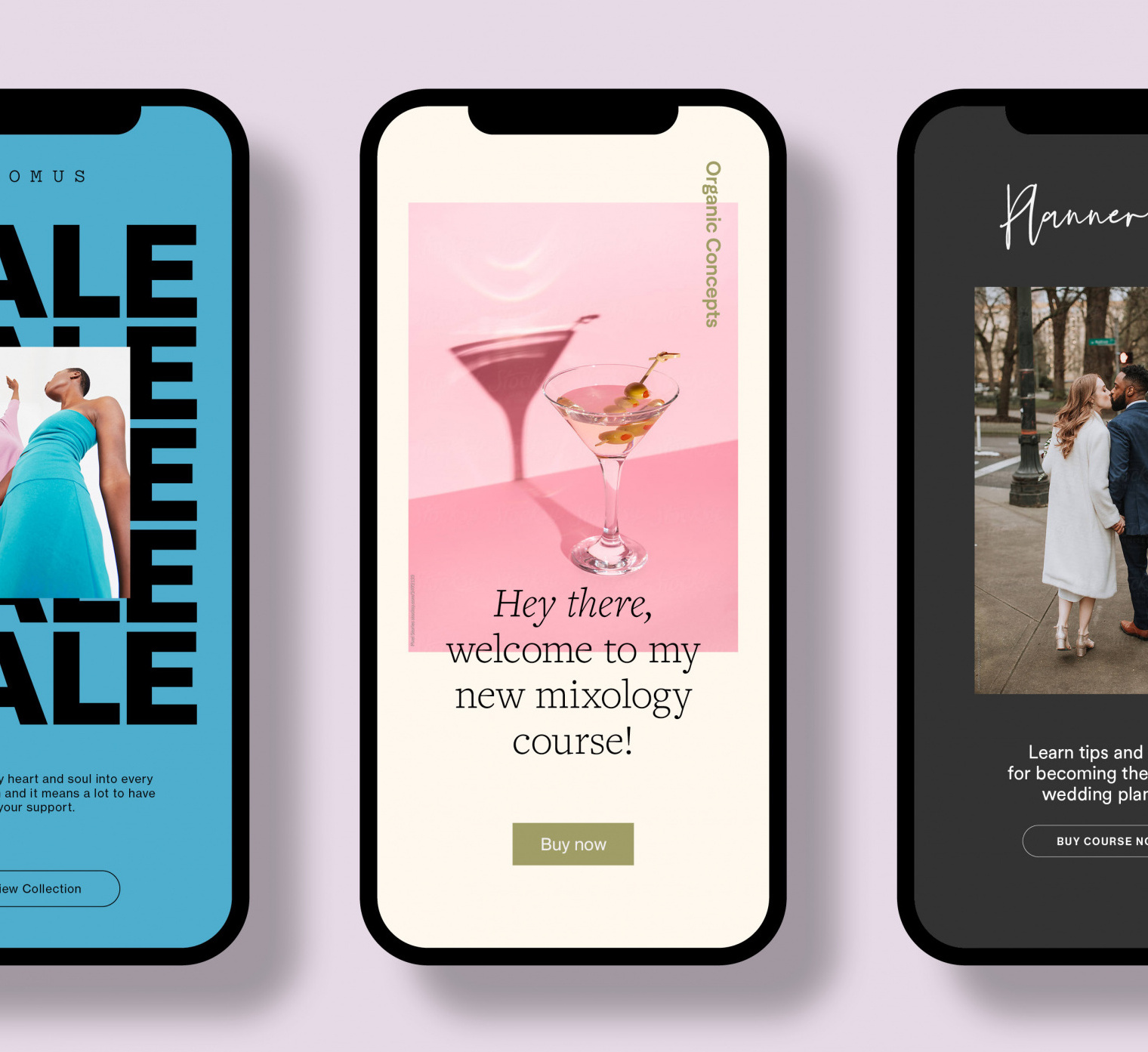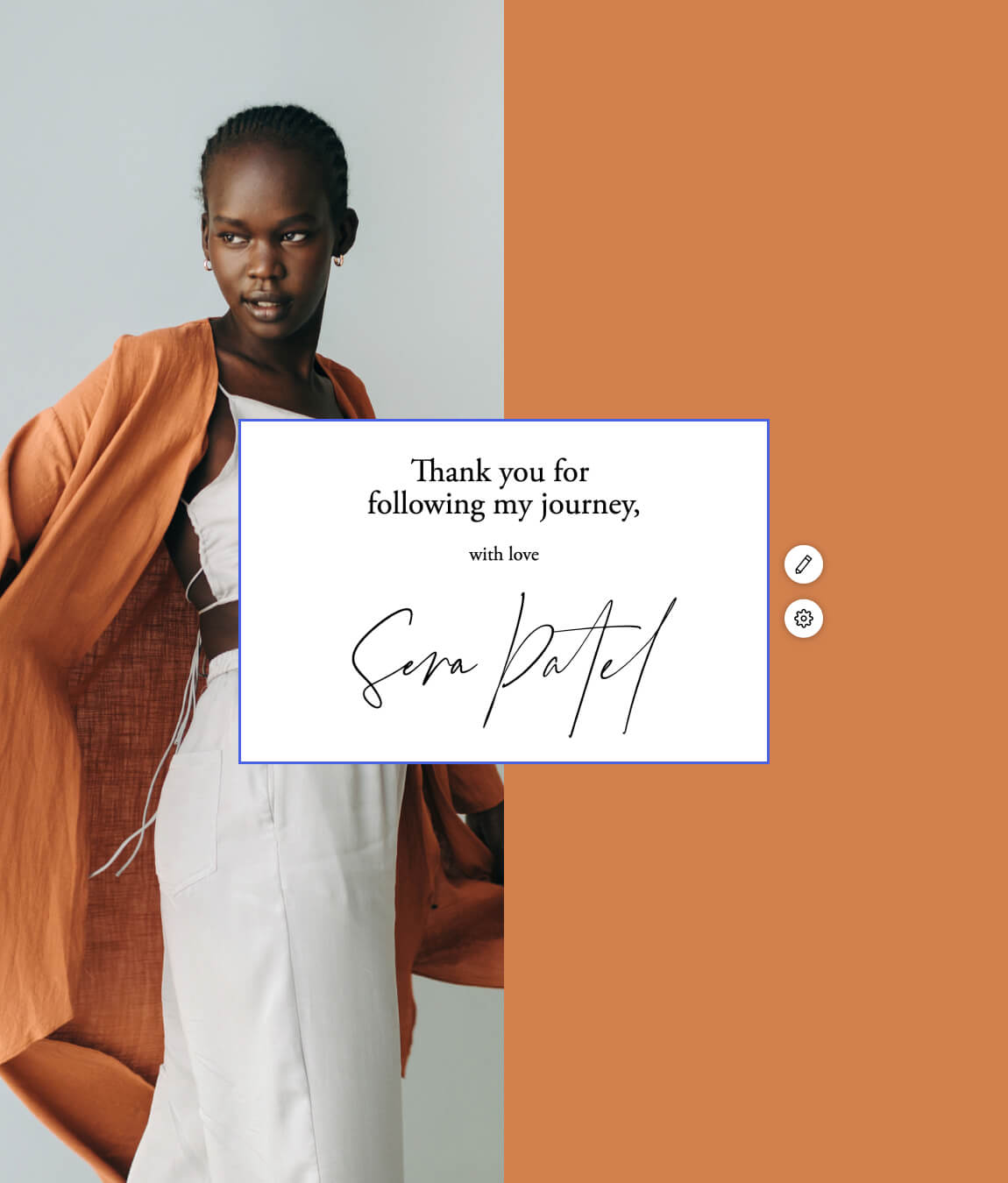7 Email & Newsletter Branding Ideas to Build Brand Awareness & Authenticity
Table of Contents Jump to:
Jump to:
Table of contents
Did you know that most people receive over 200 emails a day? That’s a lot of competition in the inbox.
Luckily, you can use branded newsletters to stand out from the crowd. In fact, by just using a signature brand color, you can increase brand recognition up to 80%.
For example, imagine Isla signs up to receive newsletters from Flodesk. Right away, she gets an email from Lindsay at Flodesk, welcoming her to the list. The email uses the same logo, fonts, and colors as the company’s website, and Isla immediately recognizes the brand.
A few days later, she receives another email from Flodesk with their weekly newsletter. The overall look and feel of the email are the same as the first, creating a consistently positive experience for Isla and building trust.
Pretty soon, Isla knows what to expect from Flodesk’s newsletters. She recognizes their brand in her inbox and chooses to engage with their familiar emails instead of other, less familiar ones.
To help you get the same results, we’ve compiled some ideas for branding your newsletters along with best practices once you get started.
But first…
Get unlimited email sends & subscribers with Flodesk
We’ll never increase pricing because your email list is growing
Why include your brand identity in email marketing?
Here are three major benefits newsletter branding brings to your business.
Customers easily remember your brand
In a recent study, a graphic designer created logos for five made-up companies and showed them to participants. After 10 minutes with the logos, 78% were able to recall the primary color of the logo, compared to only 43% who were able to remember the name.
This demonstrates that color is more important to brand recognition than even the name of your business. And quickly building brand recognition is super important in email marketing. The more your subscribers recognize your brand, the more likely they are to open your emails.
Create a consistent customer experience
When you include your brand identity in your newsletter and the customer consistently has a positive experience, they begin to associate that positivity and consistency with your brand. This builds trust, awareness, authenticity and loyalty—all good things!
And even though 87% of marketers know brand consistency is the key to building a positive customer experience, less than 60% say their messaging, visuals and voice are consistent. This gives you a chance to stand out.
Position your brand as a leader in your industry
Most newsletters educate customers or provide information in one way or another. And when you include your brand alongside your expertise, readers begin to associate them together. Your brand becomes the expert, and customers see you as a leader in the industry.
Now that you know why it’s important to brand your newsletters, here are seven ways you can implement it.
1. Tell a story
In this newsletter from Jessica over at An Indigo Day, she kicks things off with a little story about her week. It’s nothing huge or in-depth, but it’s plenty to draw readers in and make a personal connection. In just a few sentences, you feel like you really know her (and Pork!).
Using storytelling like this in your branded newsletter can be incredibly powerful—making your brand up to 22x more memorable. It’s like the secret sauce you need to connect with your audience.
If you’re new to storytelling, we recommend watching this video on 3 Steps to Tell Your Founder Story.
2. Educate your readers
In this newsletter from Her First 100K, Tori educates her readers on getting out of debt using the avalanche method. Not only does this demonstrate her brand authority by showcasing expertise in the industry, but it also gives readers what they want—information.
In fact, the number one reason people subscribe to newsletters is to learn more about a topic that interests them, followed closely by staying up-to-date on website content.
3. Provide value with on-brand special offers
In this email from Cathy at Poor Little It Girl, she sprinkles in some extra value by offering an exclusive 20% discount code to her subscribers. And she keeps the discount code on-brand, using CATHY20.
Also, note how she places the discount at the end, almost like an afterthought? This is a good way to include promotional content in your newsletter without it feeling too salesy.
4. Take readers behind-the-scenes
A great way to connect readers to your brand is by sharing behind-the-scenes information and making them feel like they have an insider view.
In this email from The Little Posy Co, for example, they share personal images and stories about their growers in a question-and-answer format.
In this email from Grace and Gold, co-founders Kelly and Andra share a new product with their readers (the San Francisco Showit template) along with some relevant company news.
This is a good way to keep subscribers connected to your brand. It builds the sense of a shared journey and also makes subscribers feel like they’re getting the inside scoop.
Want to add more subscribers to your list? Read 11 Email Marketing Lead Generation Tactics Your Subscribers Will Love
Get unlimited email sends & subscribers with Flodesk
We’ll never increase pricing because your email list is growing
6. Say thank you
In this email from home decor and lifestyle brand Haume, Antoinette thanks her customers for supporting her both personally and professionally.
And while this may not seem like it has much to do with branding, a simple thank you message like this goes a long way towards creating a positive customer experience—which in turn becomes associated with your brand.
Plus, brands that create a superior customer experience bring in 5.7x more revenue than those without.
In this email from Lindsay at Food La La, she invites subscribers to join a donation-based cooking class to support Ukraine. Not only is Lindsay supporting a cause that’s important to her, but she’s also building her brand identity by sharing her values.
And people want to buy from brands they identify with. In fact, when customers feel connected to a brand, 57% of them increase their spending with that brand and 76% buy from that company over a competitor.
Best practices for sending branded emails
Now that you have a few ideas for your newsletter emails, here are some best practices to keep in mind.
Always include your logo
It only takes 13 milliseconds for the human brain to process an image. This is why logos are so important—they allow for nearly instantaneous brand recognition. The best place to put your logo is at the top of your newsletter, preferably in the center or to the left. If space allows, include your logo again at the bottom of the email.
Create a recognizable sender address and ‘from’ name
The ‘from’ name is what shows up in most inboxes next to the subject line, identifying who the email is coming from. So be sure to set your sending email address and ‘from’ name to something your subscribers will easily recognize as being you.
We love ‘from’ names that include both your name and your brand’s, like “Michelle from Flodesk.” The same goes with your sending address. Using your name and your brand is always great (michelle@flodesk.com), or you can use something more general but still friendly, like hello@flodesk.com.
Use an email design tool or template
According to SCORE, a national nonprofit that advises small business owners, two out of three people prefer to read an email with a gorgeous design—and four out of five people will delete an email right away if it isn’t optimized for mobile.
That’s why SCORE recommends that businesses use an email design tool or template like Flodesk to create newsletters and other marketing emails. A good template will also save you a ton of time, help you track metrics, allow you to personalize content and make it easy to stay on-brand.
Read next: How to create a nonprofit newsletter
Use consistent brand colors
Remember how using a signature color can boost recognition by 80%? If you’re a Flodesk user, you can define a color palette for your brand under the “brand preferences” tab in the main menu. Your palette can include up to five colors and will be easily accessible when you’re designing emails and forms.
Use stunning graphics and visuals
Graphics and visuals are must-haves in any email marketing campaign. They catch subscribers’ attention, represent your brand and promote your call to action. However, creating gorgeous graphics from scratch is no easy task.
That’s why we recommend using design templates like the ones Flodesk provides. Flodesk removes the need for any third-party design tools like Canva—meaning you won’t have to deal with downloading, uploading and sizing images for your email campaigns. Flodesk enables users to create gorgeous built-in visuals without ever leaving the platform.
Have a look at our favorite newsletter examples for more inspiration!
Optimize your layout
To design emails that look professional and beautiful, put a 20 to 40-pixel spacer between each block in your email. This adds a light and airy feel to your design. Then make sure to check that your spacers are consistently placed between all blocks to avoid that icky “broken HTML” look. Also, double-check that your selected spacer width looks nice on mobile screens and adjust it if needed.
Want to learn more about formatting your newsletter? Read How to Format a Newsletter That Subscribers Will Want to Read and How to Create a Newsletter in Under 10 Minutes!
Include a personal signature
A personal signature adds a human touch to your newsletter, making it feel like it’s coming from an actual person instead of a faceless company. And the people in your company, whether it’s just you or a whole team, are part of your brand presence too.
Segment your audience
To make sure customers are having a good experience, you need to segment your audience so that you’re only sending relevant information. For example, if you offer both photography and design services, you may have subscribers interested only in one or the other. Instead of lumping all your subscribers together, segment them by their interests and then send newsletters specific to each group.
Personalize your greeting
Flodesk makes it easy to customize your emails with your subscriber’s name, improving the user experience. Need some examples of how you could use this? Here are some of our favorite personalized subject and email lines to grab your subscribers’ attention:
- I’d love to get your thoughts on this, Kate
- Toya—I wish more people asked me this
- Your next steps, Mike
- Hit reply and let me know if you’re here for it, Tasha.
Send emails on a regular (but not too frequent) basis
Find the sweet spot where you’re showing up in the inbox often enough to be predictable but not so much that it’s annoying. As a starting point, 90% of customers want to receive newsletters at least monthly, and 60% want emails at least weekly.
Build your brand with Flodesk email marketing
Flodesk helps small business owners design beautifully branded emails that people love to get.
Our email templates make it easy to create custom graphics, design collages and sign off every email with a speciality script font signature.
Plus, Flodesk members are never penalized for successfully growing their lists. Subscriptions are $38/month for unlimited email sends, unlimited subscribers and unlimited access to all features. Try Flodesk free today!
You can brand a newsletter by using your company logo in the header, primary brand color and consistent fonts. You should also use a consistent design style and layout and focus on creating positive experiences that customers will then associate with your brand.
Brand newsletters come in all shapes and sizes. They often include the following elements:
- Company logo, colors, font and voice
- Information or educational tips
- Upcoming events
- Special offers
- Personalized content
- Stunning visuals
- Strong subject line
- Links to social media accounts
Newsletters are hard to beat when it comes to return on investment (ROI). In fact, email marketing continues to pull in an ROI of $40 for every dollar spent—higher than any other marketing channel. If you want to read more about the cost and effectiveness of newsletters, see our article on the topic: The Ultimate Newsletter Cost Breakdown to Maximize ROI.
